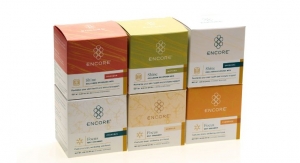By Suzanne Shelton, The Shelton Group07.02.18
Dietary supplement marketing today requires transparency. After years of mainstream media raising all kinds of questions about the safety and efficacy of products this industry produces, people are skeptical, even as the number of users continues to grow. The supply chain for commodities remains problematic, but branded ingredients engender trust, which is worth examining in some detail. How have branded ingredient suppliers stepped up their game, and how can that be conveyed to customers?
Pulling the Curtain Back
Consumers have access to more information—at any time or location—than ever before. Consequently, more supplement brands are pulling back the curtain to reveal their testing practices, manufacturing facilities, company policies, and especially what their ingredients are and how they choose them. Suppliers with heavy investment in branded ingredients are making it easier for their customers to provide that information to consumers, and some of their stories will resonate deeply with supplement users. I predict in the near future we’ll see an increasing number of brands putting the stories their suppliers have to tell front and center in more of their marketing efforts. Some branded ingredient companies are even reaching out directly to educate retailers in the health food channel about their products.
Ingredients are complicated. Which ingredients are selected for product formulations influence, and are influenced by, all aspects of a company. Managing supply chain challenges, short-term profits vs. the long-term view, healthcare professional acceptance, regulatory compliance, and consumer expectations all coalesce in this one decision.
What do branded ingredients bring to the table? Generally, but not always, branded ingredients are backed by intellectual property in the form of research and patents. The ingredients and the company often have other virtues that help establish trust and credibility as well. Let’s look at examples of those and some of the most effective ways to convey the advantages to brands, consumers, and the medical community, all of which are crucial to an ingredient’s success.
Research & IP
Ingredient suppliers have stepped up their research game exponentially in the nearly 30 years I’ve been in the industry. Years ago, there were a few suppliers involved in solid research on their own branded ingredients, but it was more common for ingredient marketing to be built around science “borrowed” from competitors. It was an unsustainable practice, subject to much criticism within the industry, and a source of both amusement and frustration to trade media. Slowly that changed as more branded ingredients were researched to establish safety data for New Dietary Ingredient (NDI) and Generally Recognized As Safe (GRAS) status applications. Patent applications required data as well. R&D departments developed novel extracts, which had to be studied for regulatory purposes. The benefits were also researched, sometimes discovering health supporting mechanisms not previously known.
Early on, most of the research was in vitro, with some in vivo mostly in animal models. Sometimes it was published, sometimes not. Over time, human clinical trials became more common, and were increasingly published in peer-reviewed journals. Today, the quality of research is far more respectable, and paying off, as evidenced by the medical community’s endorsement of ingredients such as curcumin and choline, which has been a significant factor in sales growth for those ingredients.
Leading suppliers are also being more proactive about self-policing when they see problems, particularly with adulteration. Advocating for fit-for-purpose testing has moved beyond labs and forward-thinking trade associations, with some ingredient suppliers notifying colleagues and competitors about adulterants they have uncovered and how to test to find them. We’ve even seen one supplier in particular develop extensive cultivation programs, giving it adequate supply of raw material and more control over quality, while at the same time materially improving quality of life for small farming communities. The company recently pioneered a first of its kind reforestation program.
These are stories worth telling. Branded ingredient suppliers often have their hands full with sales, and don’t always convey the substance behind their products as effectively as they could to the several tiers of audiences who may be interested. Those audiences can include: product formulators and ingredient buyers for brands, mass market retail buyers, health food store buyers and staff, and consumers. The level of detail they want varies, as can the method of presentation.
Tailored Messaging
Supplier-produced messaging must be clear, concise, and helpful so it can operate across promotional channels to reach different audiences. It’s extremely effective to begin by developing a comprehensive messaging document that lays out all of the information, and use that to create the various marketing pieces.
A good branded ingredient supplier’s marketing program conveys an ingredient’s value proposition beyond price by highlighting the safety and efficacy research, and other unique aspects of the specific branded ingredient (which are often linked to ingredient-specific research). The companies pioneering cultivation and fair trade programs highlight that as well. A combination of video, white papers, infographics, and e-Books can be powerful in such cases.
Obviously product formulators will want a deeper level of technical information about branded ingredients, including research and appropriate dosage forms possible. Some novel ingredient suppliers have begun providing guidance on test methods, or names of labs that have their test methods. While there are some mass market and health food channel buyers of finished products who may want that level of detail, it’s important to have an additional piece that is less technical, but describes benefits clearly for the majority of those buyers. For the health food channel, education that helps sell products containing those ingredients to consumers is useful as well.
Since so many products begin to develop buzz in the health food channel, educating those retailers makes sense. In addition to trade magazine editorial and advertising opportunities, producing content for this audience can support the products from brands using branded ingredients. We’ve produced “retailer toolkits” that provide different components to help retailers market and sell finished products containing the ingredient. Contents generally include several kinds of information: overview of a branded ingredient and its benefits more generally, an infographic to describe it that can be used in the store or online, and a more technical piece explaining the research on the ingredient, with references. We also build components for retailers to use in their marketing, such as sample newsletter articles, and even social media posts to cut and paste.
There are definite advantages to thinking in terms of co-marketing with companies using branded ingredients since most content can be used at several levels along the supply chain. Some brands want a turnkey program, others prefer to work with you to develop a program that fits their preferences, but ideally your sales rep for that customer will know the best approach.
And finally we come to reaching consumers. While at one point ingredient suppliers aspired to an “Intel Inside” program, the scale required was sobering. Finished product companies do sometimes use material from branded suppliers in their marketing though, which I think is smart. Since consumers are inundated with messaging, it’s critical that any marketing material a supplier expects to live further down the supply chain, and be seen by retailers or consumers, must be well designed and written. If not, it’ll probably get lost or, even worse, a consumer will see it and make product quality assumptions based on low-quality marketing. For example, suppliers used to get away with relatively utilitarian websites because they weren’t consumer facing. Today, a research-oriented consumer will be quick to assume a company is low-budget/low-quality based on a bad web experience.
Branded ingredients have inherent advantages over commodity ingredients that are appealing down the supply chain, from formulators to consumers. A strategic approach to developing branded ingredient marketing content ensures your messages reach the entire chain.
About the author: Suzanne Shelton has handled public relations for international and domestic dietary supplement and natural products manufacturers and suppliers since 1990. In addition to taking good care of her clients, several of whom have kept her on retainer for over a decade, she is actively involved in advocating industry best practices and fostering growth. Awards she’s received include the AHPA Herbal Hero award, an NBJ award for Efforts on Behalf of Industry, and a Crusader award from the NNFA. Ms. Shelton was a founding board and executive committee member of the Natural Products Foundation, and is Communications Committee Chair of the American Herbal Products Association. For more information: www.sheltongrouppr.com.
Pulling the Curtain Back
Consumers have access to more information—at any time or location—than ever before. Consequently, more supplement brands are pulling back the curtain to reveal their testing practices, manufacturing facilities, company policies, and especially what their ingredients are and how they choose them. Suppliers with heavy investment in branded ingredients are making it easier for their customers to provide that information to consumers, and some of their stories will resonate deeply with supplement users. I predict in the near future we’ll see an increasing number of brands putting the stories their suppliers have to tell front and center in more of their marketing efforts. Some branded ingredient companies are even reaching out directly to educate retailers in the health food channel about their products.
Ingredients are complicated. Which ingredients are selected for product formulations influence, and are influenced by, all aspects of a company. Managing supply chain challenges, short-term profits vs. the long-term view, healthcare professional acceptance, regulatory compliance, and consumer expectations all coalesce in this one decision.
What do branded ingredients bring to the table? Generally, but not always, branded ingredients are backed by intellectual property in the form of research and patents. The ingredients and the company often have other virtues that help establish trust and credibility as well. Let’s look at examples of those and some of the most effective ways to convey the advantages to brands, consumers, and the medical community, all of which are crucial to an ingredient’s success.
Research & IP
Ingredient suppliers have stepped up their research game exponentially in the nearly 30 years I’ve been in the industry. Years ago, there were a few suppliers involved in solid research on their own branded ingredients, but it was more common for ingredient marketing to be built around science “borrowed” from competitors. It was an unsustainable practice, subject to much criticism within the industry, and a source of both amusement and frustration to trade media. Slowly that changed as more branded ingredients were researched to establish safety data for New Dietary Ingredient (NDI) and Generally Recognized As Safe (GRAS) status applications. Patent applications required data as well. R&D departments developed novel extracts, which had to be studied for regulatory purposes. The benefits were also researched, sometimes discovering health supporting mechanisms not previously known.
Early on, most of the research was in vitro, with some in vivo mostly in animal models. Sometimes it was published, sometimes not. Over time, human clinical trials became more common, and were increasingly published in peer-reviewed journals. Today, the quality of research is far more respectable, and paying off, as evidenced by the medical community’s endorsement of ingredients such as curcumin and choline, which has been a significant factor in sales growth for those ingredients.
Leading suppliers are also being more proactive about self-policing when they see problems, particularly with adulteration. Advocating for fit-for-purpose testing has moved beyond labs and forward-thinking trade associations, with some ingredient suppliers notifying colleagues and competitors about adulterants they have uncovered and how to test to find them. We’ve even seen one supplier in particular develop extensive cultivation programs, giving it adequate supply of raw material and more control over quality, while at the same time materially improving quality of life for small farming communities. The company recently pioneered a first of its kind reforestation program.
These are stories worth telling. Branded ingredient suppliers often have their hands full with sales, and don’t always convey the substance behind their products as effectively as they could to the several tiers of audiences who may be interested. Those audiences can include: product formulators and ingredient buyers for brands, mass market retail buyers, health food store buyers and staff, and consumers. The level of detail they want varies, as can the method of presentation.
Tailored Messaging
Supplier-produced messaging must be clear, concise, and helpful so it can operate across promotional channels to reach different audiences. It’s extremely effective to begin by developing a comprehensive messaging document that lays out all of the information, and use that to create the various marketing pieces.
A good branded ingredient supplier’s marketing program conveys an ingredient’s value proposition beyond price by highlighting the safety and efficacy research, and other unique aspects of the specific branded ingredient (which are often linked to ingredient-specific research). The companies pioneering cultivation and fair trade programs highlight that as well. A combination of video, white papers, infographics, and e-Books can be powerful in such cases.
Obviously product formulators will want a deeper level of technical information about branded ingredients, including research and appropriate dosage forms possible. Some novel ingredient suppliers have begun providing guidance on test methods, or names of labs that have their test methods. While there are some mass market and health food channel buyers of finished products who may want that level of detail, it’s important to have an additional piece that is less technical, but describes benefits clearly for the majority of those buyers. For the health food channel, education that helps sell products containing those ingredients to consumers is useful as well.
Since so many products begin to develop buzz in the health food channel, educating those retailers makes sense. In addition to trade magazine editorial and advertising opportunities, producing content for this audience can support the products from brands using branded ingredients. We’ve produced “retailer toolkits” that provide different components to help retailers market and sell finished products containing the ingredient. Contents generally include several kinds of information: overview of a branded ingredient and its benefits more generally, an infographic to describe it that can be used in the store or online, and a more technical piece explaining the research on the ingredient, with references. We also build components for retailers to use in their marketing, such as sample newsletter articles, and even social media posts to cut and paste.
There are definite advantages to thinking in terms of co-marketing with companies using branded ingredients since most content can be used at several levels along the supply chain. Some brands want a turnkey program, others prefer to work with you to develop a program that fits their preferences, but ideally your sales rep for that customer will know the best approach.
And finally we come to reaching consumers. While at one point ingredient suppliers aspired to an “Intel Inside” program, the scale required was sobering. Finished product companies do sometimes use material from branded suppliers in their marketing though, which I think is smart. Since consumers are inundated with messaging, it’s critical that any marketing material a supplier expects to live further down the supply chain, and be seen by retailers or consumers, must be well designed and written. If not, it’ll probably get lost or, even worse, a consumer will see it and make product quality assumptions based on low-quality marketing. For example, suppliers used to get away with relatively utilitarian websites because they weren’t consumer facing. Today, a research-oriented consumer will be quick to assume a company is low-budget/low-quality based on a bad web experience.
Branded ingredients have inherent advantages over commodity ingredients that are appealing down the supply chain, from formulators to consumers. A strategic approach to developing branded ingredient marketing content ensures your messages reach the entire chain.
About the author: Suzanne Shelton has handled public relations for international and domestic dietary supplement and natural products manufacturers and suppliers since 1990. In addition to taking good care of her clients, several of whom have kept her on retainer for over a decade, she is actively involved in advocating industry best practices and fostering growth. Awards she’s received include the AHPA Herbal Hero award, an NBJ award for Efforts on Behalf of Industry, and a Crusader award from the NNFA. Ms. Shelton was a founding board and executive committee member of the Natural Products Foundation, and is Communications Committee Chair of the American Herbal Products Association. For more information: www.sheltongrouppr.com.




























